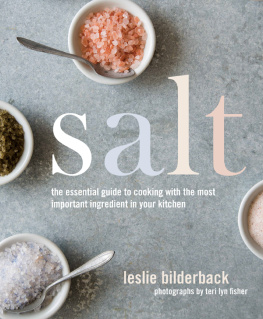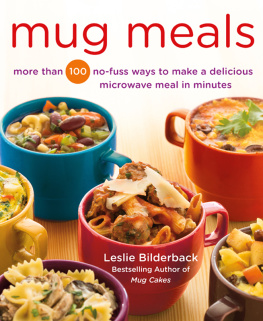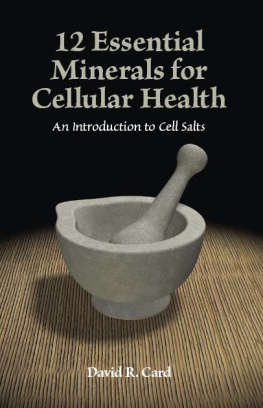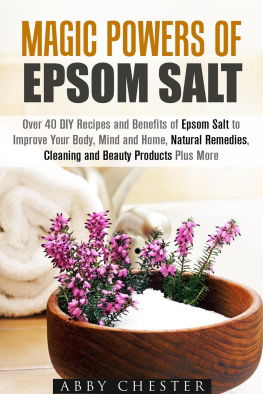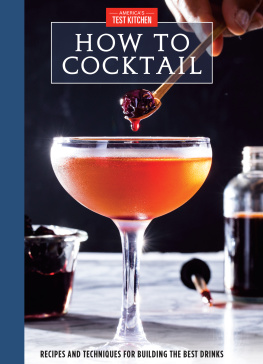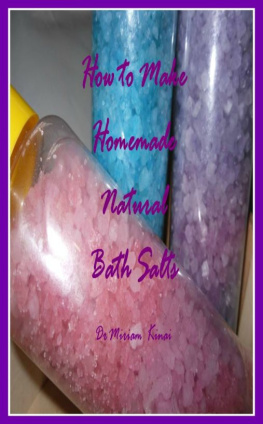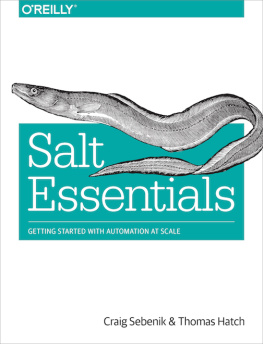Contents
Guide
the essential guide to cooking with the most important ingredient in your kitchen
Salt
leslie bilderback
photographs by teri lyn fisher

The author and publisher have provided this e-book to you for your personal use only. You may not make this e-book publicly available in any way. Copyright infringement is against the law. If you believe the copy of this e-book you are reading infringes on the authors copyright, please notify the publisher at: http://us.macmillanusa.com/piracy.
This book is dedicated to Bill, Emma, and Claire, who were with me on that first amazing salt mine tour, and slid down the banister with me. Thanks for trying all the weird salt with open minds and big smiles.
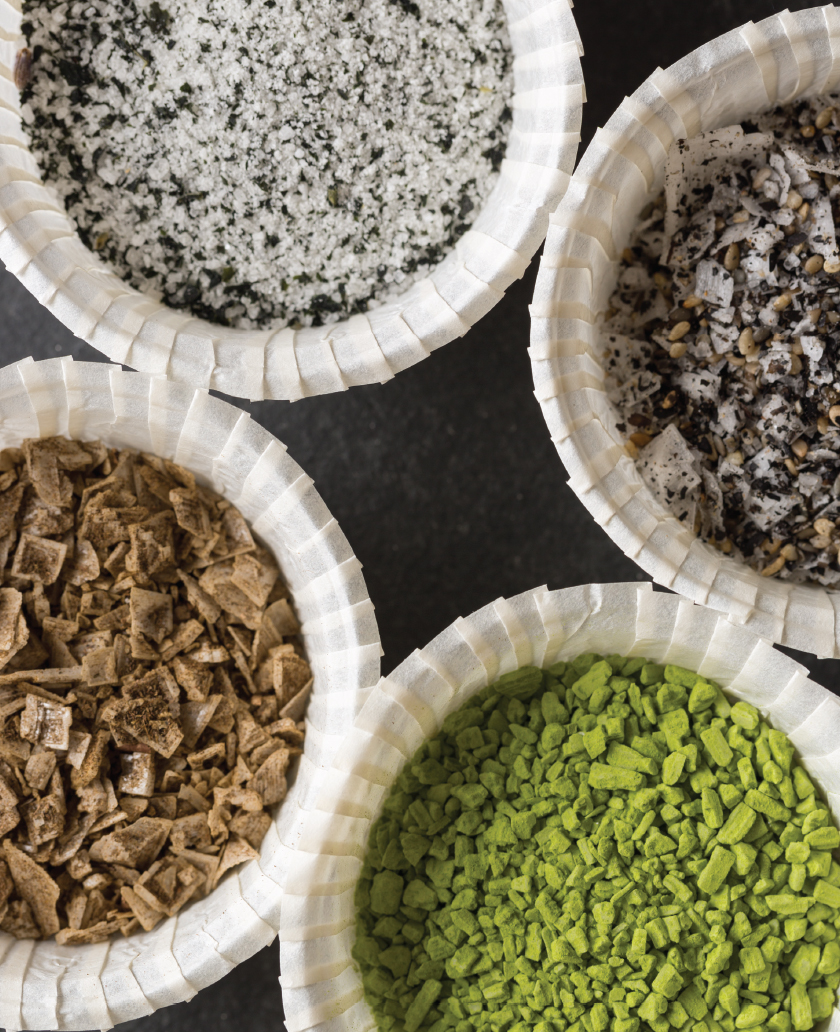
When my girls were still in high school, we took a family vacation to Austria. We took the obligatory Sound of Music Tour, then headed up into the mountains of neighboring Berchtesgaden, just over the border in Germany. Our schedule allowed for either a tour of the Eagles Nest, or a tour of a salt mine. We chose the salt mine, despite the eyeball-rolling of my teenage girls, who werent so much interested in World War II history as they were the busload of German boys headed in that direction. (It was a veritable Rolf smorgasbord.)
That tour of the Berchtesgadens main salt mine turned out to be the most amazing thing we did during the entire two-week trip, and the one thing about that summer we still all talk about. After donning matching safety jumpsuits, we boarded tiny trains that chugged us deep into the mountain. We sped (and I mean sped) through tunnels that left very little head clearance for my 6-foot-1-inch husband. We passed interpretive historical signs and markers, mannequins decked out in old-timey miner garb, and video explanations of the mining process. When it was time to continue down to the lower level of the mine, we did it the old-fashioned wayall four of us stacked together on a banister. What a kick! It wasnt so much thrilling as crazily unexpectedand a dash bizarre. The tour culminated in a boat ride across Mirror Lake. Thats a lake inside the mountain created by the mining process. While it is cool enough just being on a lake inside a mountain, they added music and a laser light show that rivaled any Pink Floyd Laserium I saw in the 70s.
As a chef I was familiar with a few artisan salts. I occasionally used fleur de sel or Maldon sea salt in a finishing application. I was particular about my use of kosher salt in the kitchen, and routinely forced my students to taste it (much to their displeasure) and compare the flavor of kosher salt with the table salt they were used to using. But it was not until that Austrian trip that I really understood the true nature of salt. Over time I realized that I have been sadly, saltily ignorant.
The mining of salt, in particular, was an abstract concept to me. I recognized its existence, thanks to the mule boys of Pinocchios Pleasure Island. But, up until that trip, I had really only thought of salt as a product of the seawhich, of course, it is. It just so happens that many of the seas are long gone, their remnants trapped in mountains.
I ended up tasting and buying a number of Bavarian salts on that trip, and have since become a salt collectorindeed, a salt nerd extraordinairea trait that you can now benefit from.
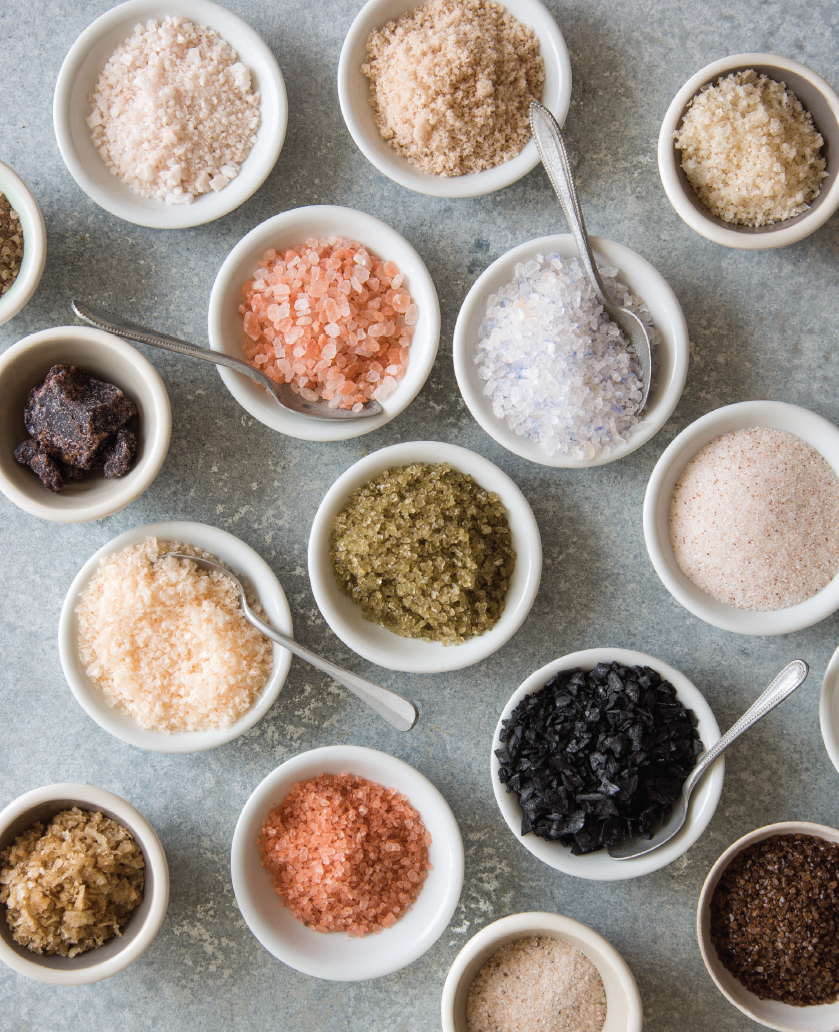

This book is about cooking with salt. But my philosophy has always been that knowing the history of a food makes cooking it much more enjoyable. And for professional chefs, not knowing a foods history makes you a bad practitioner. The history of salt has already been well documented in several best-selling tomes, with which I am loath to compete. (If you have not already read it, run out and buy Salt: A World History by Mark Kurlansky.) With that in mind, however, please allow me to offer just a few facts that will make your salty exploration more meaningful.
Salt has been important to humankind for millenniaprobably since the first civilizations sprung up along the edges of deserts spotted with salt deposits. Salt not only immediately made everything tastier, it became vital to food preservation (as you will learn in the section Curing with Salt). It also became important in the production of leather, textiles, and as a pain remedy. Human health depends on salt, too. And although early peoples couldnt have known to what extent, it was likely clear that life was better when they had salt. Thus began the economic chapter of salts history.
Early wars were fought for salty territories, and saltworks have been key targets in wartime, including during the American Civil War. Slaves were traded for it (if they were worth their salt). Roman legionnaires were probably not really paid with it, although it makes a good story about the origin of the word salary. Salt taxes were levied in most countries; the first we know of were in China in the third century BC. Salt became an essential commodity that offered great power to those that controlled ita fact that fueled more than one revolution (Gandhis Salt March, the French Gabelle, The Moscow Salt Riot). Revenue from salt taxes funded everything from the British Monarchy to the Erie Canal.
The salt trade plied notably, and early, by the Phoenicians, helped create new roads, trade routes, ports, and cities. The Via Salaria is considered by some historians to be the reason Rome exists at all. First it delivered the Sa-bines to the salt pans of Ostia (Porta Salaria at the Aurelian Walls), then it extended out to the Adriatic. Cheshire County in England has been an important salt-producing region since medieval times, and Liverpool became hugely important (long before the Beatles) as the main conduit of salt from Cheshire. Munich rose to power by controlling the trade of salt from Salzburg (literally salt mountain). Polands wealth and prominence in the sixteenth century were similarly due to profit from local salt mines.
It should be no surprise that something wielding so much power and wealth would, eventually, be given spiritual significance. The Old and New Testaments repeatedly use salt as a parable (Lots wife, salt of the earth, salvation). The evil of Judas is telegraphed as he knocks over the salt in Da Vincis depiction of the Last Supper. Salt was used in Greek ritual sacrifice and Jewish temple offerings. Buddhists use it to repel bad spirits, and, as such, it is a very important element of a sumo wrestling match. Shinto use salt to purify, Indians offer it as a symbol of good luck, and natives of the American Southwest worshipped the Salt Mother.
I can understand the negative connotations of salt. My nicked hands sting with every salty application. And as a kid, my mom let me pour salt on the slugs that were destroying our garden. Salt has been used to destroy agricultural land, and also as a defense against icy roads. Still, despite the havoc salt can wreak, it remains to me a symbol of love. Food is made better by salt, and by association, so are meals. And the better the meal, the more love gathers at the table. Good food brings my kids home, and for that I am eternally grateful to salt.

